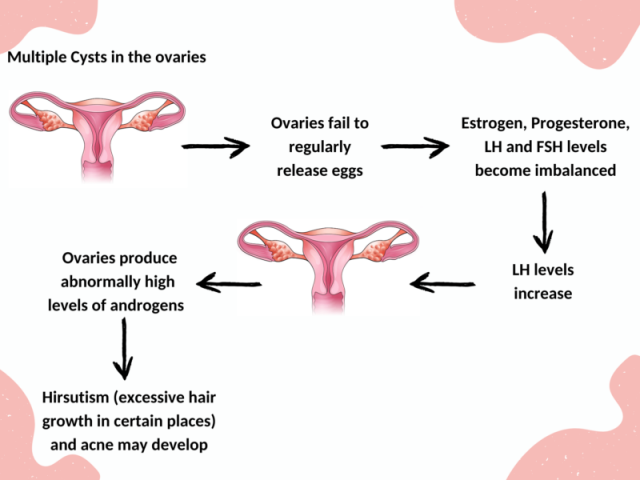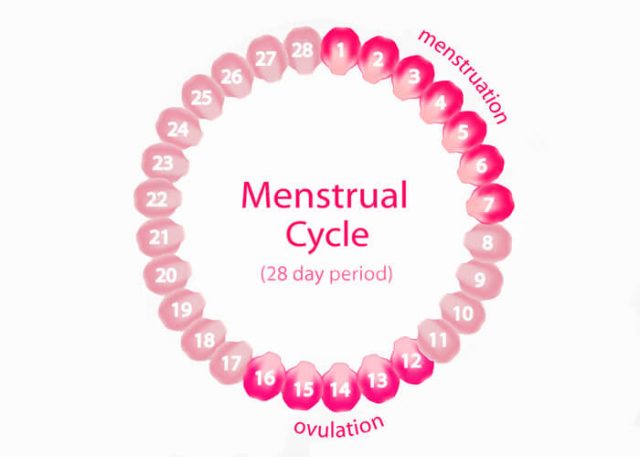Medical issues unique to women can negatively impact their health for a variety of reasons: broad lack of awareness of the diseases, hesitancy to talk about them openly, and taboo topics, especially reproductive issues.
One hormonal disorder infrequently discussed and misunderstood is Polycystic Ovary Syndrome (PCOS). The exact cause of PCOS is unknown and it lacks a test for a definitive diagnosis. PCOS causes irregular menstrual periods due to missed monthly ovulation and occurs in about 5-10% of women. Factors that may play a role in developing PCOS include:
Insulin abnormalities
Insulin, a hormone produced by the pancreas, helps glucose in the blood enter cells in the muscles, fat and liver. Insulin is released in response to an increase in blood glucose levels. It helps keep blood glucose levels within the normal range. PCOS is associated with elevated levels of insulin in the blood and insulin resistance. Excess insulin can increase androgen production, causing difficulty with ovulation.
Insulin resistance with PCOS increases the risks for Prediabetes and Diabetes. It is estimated that women with PCOS who are obese have a three-fold increase in risk for Prediabetes compared to obese women without PCOS.
Menstrual cycle and ovarian cysts
In women with PCOS, small cysts approximately 4-9 millimeter in diameter accumulate in the ovaries. Research has shown that women with PCOS have a type of low-grade inflammation that can stimulate cysts in the ovaries. There is an imbalance in the hormones (Estrogen, Progesterone, Luteinizing Hormone (LH), Follicle-Stimulating Hormone (FSH)) that maintain a normal menstrual cycle and ovulation. High levels of LH cause an increase in androgens. Androgens are male hormones, normally produced in both men and women, in differing amounts.
Androgens include Testosterone, Androstenedione, Dehydroepiandrosterone (DHEA), and DHEA sulfate (DHEAS). These are produced by the ovaries and adrenal glands.


Other factors
Metabolic system abnormalities, which control the processing of carbohydrates, fats, proteins, and certain genes, may be linked to PCOS.
Symptoms of PCOS
Changes in hormone levels, as described above, cause tell-tale symptoms of PCOS: irregular periods, excess face and body hair, occasionally severe acne, and male-pattern baldness.
Menstrual irregularity


Normally during the first half of the menstrual cycle, the ovary develops a follicle that contains an egg (oocyte). The follicle produces rising levels of estrogen, which causes the lining of the uterus to thicken. A large amount of LH is also produced. This mid-cycle surge of LH causes the egg to be released from the ovary (ovulation) approximately 36-48 hours following the LH surge.
In PCOS, ovulation does not occur. Therefore, the lining of the uterus does not shed and regrow, as in a normal cycle. The lining becomes thicker and may shed irregularly, causing irregular, heavy, and/or prolonged bleeding. The thickening of the uterus lining can increase a woman’s risk for overgrowth and uterine cancer.
Women with PCOS may have fewer than nine periods a year.
Infertility
Women with PCOS can take longer to get pregnant since ovulation does not occur regularly.
Male-pattern hair growth (Hirsutism) and Acne
Excess hair growth may be seen on the upper lip, chin, neck, sideburn areas, chest, upper or lower abdomen, upper arms, and inner thighs due to increased levels of male hormones (androgens).
The oily skin and blockages in hair follicles, from increased androgens, can cause acne.
Weight gain
Approximately 50% of women with PCOS may experience gradual weight gain and obesity.
Other problems can impact quality of life
- Depression, anxiety and eating disorders
- Increased risk of cardiovascular illness due to abnormal cholesterol and triglyceride levels
- Increased risk of high blood sugar
- Increased risk of high blood pressure
- Sleep apnea
- Uterine cancer
Actions to Take
The key component to managing PCOS is healthy lifestyle modification. Note that fatigue, poor sleep quality, associated eating disorders, and depression can be barriers to adopting and sustaining lifestyle changes.


Put in place a weight control program that includes diet modification and moderate exercise activities. Regarding diet, choose complex carbohydrates over simple carbohydrates, which raise blood sugar levels more slowly. Also, choose regular physical activities that you find enjoyable.
“Turn your wounds into wisdom.”
– Oprah Winfrey
“Believe you can and you’re halfway there.”
– Theodore Roosevelt


